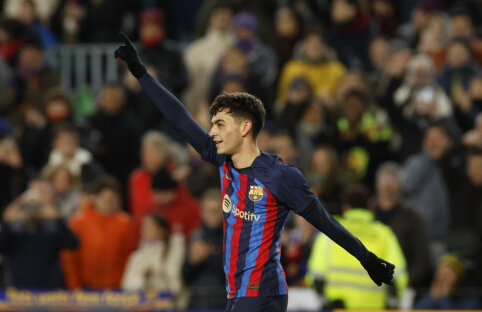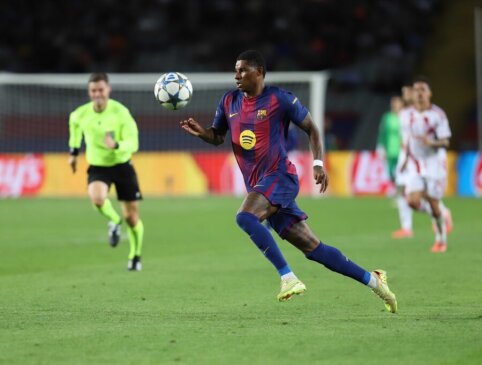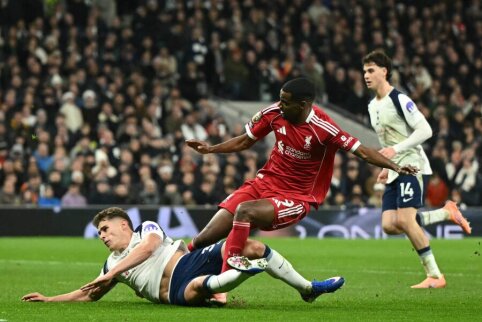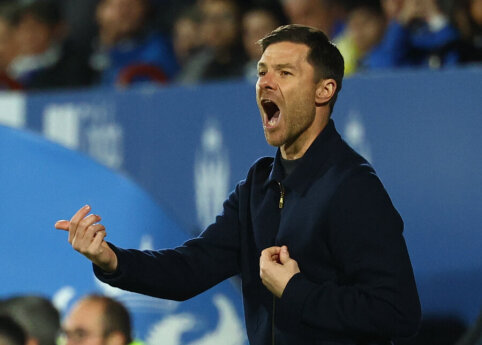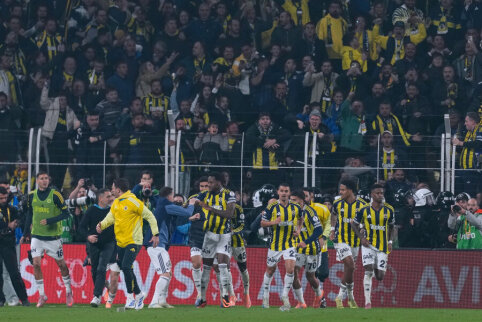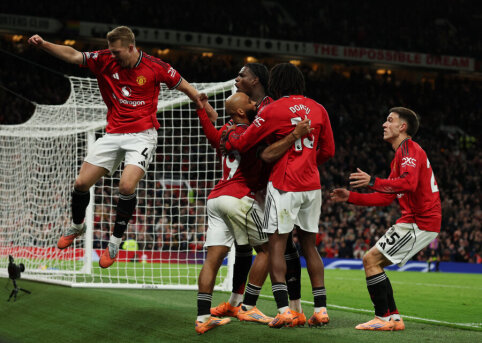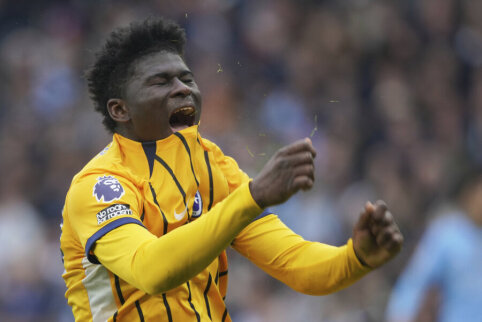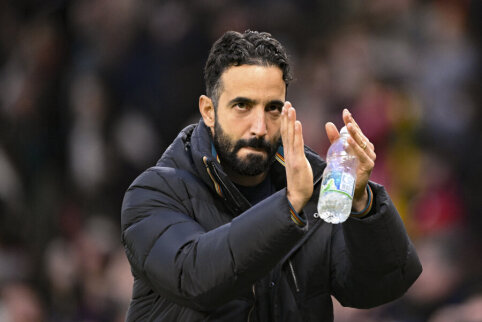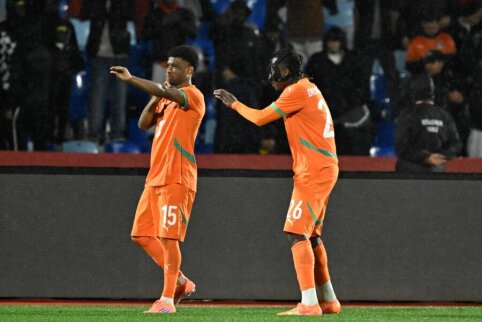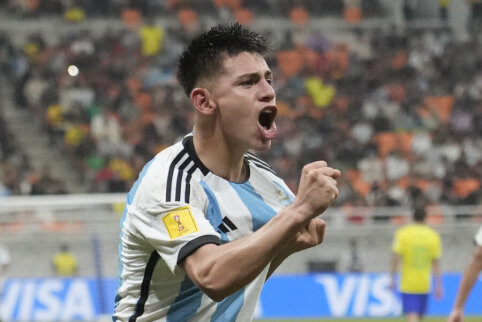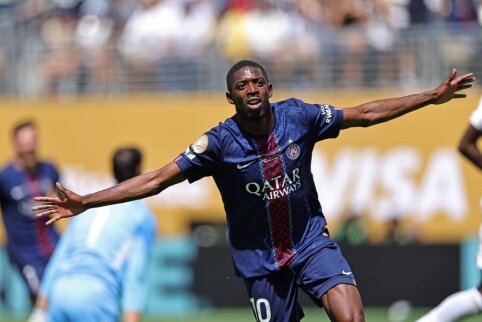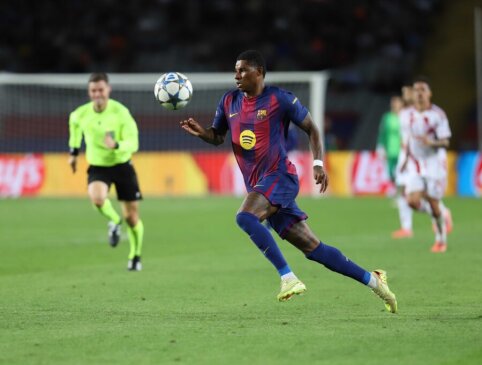 © EuroFootball.com
© EuroFootball.com
The name of the "False 9" position comes from the term center forward (CF), who plays at the tip of the attack and receives passes from teammates. His goal is to score goals (in English, he is called a "Target man," and excellent examples of such players are D. Drogba or A. Carroll). The player in this position is called the ninth number.
The definition of "False 9" can be found the same on various football websites: an unconventional forward who often "drops" deep into safe positions. We can consider Francesco Totti as the creator of this position, who played this way for AS Roma in the 2006/2007 season. Lionel Messi started playing this way for Barcelona in the 2008/2009 season when he switched positions with Samuel Eto'o, and at the beginning of the 2009/2010 season, Robin van Persie took on this role for Arsenal.
A Bit of History
"The Guardian" journalist Jonathan Wilson, author of the book "Inverting the Pyramid" (the best football book of 2009), argues that the origins of the "False 9" position can be traced back to the third decade in South America. In the fourth decade, Austrians played this way, and in the sixth decade, the dominant Hungarian national team did so. In 1953, the Hungarians crushed England 6-3 at Wembley Stadium, and the next year, they won 7-1.
In modern football practice, we can consider AS Roma coach Luciano Spalletti as a user of this position, whose team in 2007 was decimated by injuries. Without enough healthy players, L. Spalletti left only F. Totti up front. However, the legendary Italian was not left alone to wait for passes but took on the role of a trequartista. Thus, the traditional 4-2-3-1 system of Roma was changed to 4-6-0 or 4-5-1-0.
As we can see from the diagram, Marko Vucinic, who would have played as a forward in any other team in the world, played on the left wing for Roma at that time. When F. Totti dropped deep, M. Vucinic moved into the center. Even when the injured players returned, F. Totti continued to play in the "False 9" position, scoring 26 goals and becoming not only the top scorer in Serie A but also winning the "Golden Boot" that year.
This playing system showed its strength in the first leg of the Coppa Italia final when Roma decimated Inter Milan, the Serie A champions that year, 6-2. Football fans also witnessed the riskiness of such a game plan when Roma was defeated 1-7 by Manchester United in the second leg of the UEFA Champions League quarter-final.
Nevertheless, both Manchester United and Barcelona used the "False 9" position and went on to win the Champions League in the following two seasons.
The Manchester team won both the Premier League and the Champions League in 2007/2008, using Carlos Tevez in the "False 9" position. The Argentine did not play this way in every match, but sometimes "dropped" deeper, creating space up front for Wayne Rooney and Cristiano Ronaldo to attack from the wings.
The following season, Barcelona used this system and won the treble (La Liga, Copa del Rey, and Champions League), with Lionel Messi playing in the "False 9" position in the Champions League final. This completely baffled Sir Alex Ferguson, and Barcelona dominated the entire match to win the final.
How does the tactic with a "False 9" work?
The position of the "False 9" player is all over the opponent's half of the field. He can be a goal scorer at the tip of the attack, in the center of the field, or near the midfield line to start an attack. Most of the time, this player plays upfront, but he "drops" into safe positions to pick up the ball himself instead of waiting for passes from teammates. This creates space for other team members (as Lionel Messi showed last year when he scored 73 goals and made 29 assists).
A simple example: the "False 9" "drops" towards the center line of the pitch, forcing the defender (CB) to make a decision - either stay in place, leaving plenty of room for the "False 9" in the center of the field, or move down with him. If the defender moves down with the "False 9," it leaves a gap in the red team's defense that can be exploited by another forward (FW - inside forward).
If he is marked by the right-back (RB), the attacking team's left-back (LB) can exploit the gap. In addition, the attacking team has two central midfielders (CM) who can move towards the opponent's penalty area. Thus, there are numerous ways to continue the attack.
When the defender assigned to mark the "False 9" position does not move down from the defensive line, the "False 9" has much freedom in the center of the field. Having received the ball, he can launch a direct attack, bypassing the defender and scoring a goal himself or passing to other teammates.
An ideal player for this position must be very technical, fast, and creative. He must be able to take shots on goal himself, but also have good vision of the field and make passes to his teammates. He must be able to "read" the game and have a good understanding with his teammates.
Why is it difficult to stop the "False 9" and his team?
Let's take the traditional and well-known 4-4-2 tactic - let's say both teams are using it. In this case, everyone knows which players to mark: two center-backs mark the forwards, two central midfielders cover each other, and so on.
As described above, when one of the theoretical center forwards (actually the "False 9") drops "down," the defender has to make a decision. This choice disrupts the whole system, and the defending team's players often get confused, leading to chaos in defense. Seizing this opportunity, the attackers and wide midfielders of the attacking team find themselves in good positions to score.
If the team playing against a 4-4-2 formation has a player who can play in the "False 9" position in a 4-3-3 or 4-2-3-1 system, the situation becomes even more dangerous. The "False 9" drops down again, and the chasing defender leaves his teammates even more isolated. The remaining defenders have to deal with two forwards attacking from the wings (like Dani Alves at Barcelona) or midfielders who can take advantage of the space created by the "False 9."
Why is playing this way dangerous, or how to stop a team with a "False 9"?
First of all, to use the "False 9," you need a player who can fill that role (as mentioned above). The team must be well-coordinated and able to exploit the smallest gaps in the opponents' defense. Sometimes, passes have to be "threaded" through very narrow spaces as defenders quickly realize their mistake.
Secondly, the defending team can set up a low block - like Chelsea did in the Champions League semifinal against Barcelona. Ball control and even Lionel Messi himself could not break through.
Thirdly, even with the right player for the "False 9" position, he needs support. F. Totti had M. Vucinic and D. de Rossi by his side, C. Tevez had W. Rooney and C. Ronaldo, L. Messi has David Villa and Xavi. Additionally, there is C. Fabregas, who demonstrated his own version of the "False 9" in the European Championship.
Pep Guardiola and Lionel Messi gave exceptional significance to the "False 9" position
For the past four years, Barcelona has created a formidable aura, with any misstep being seen as a sensation. Why? P. Guardiola's Barca won everything possible, not because they used Lionel Messi as a "False 9" player but because L. Messi squeezed everything possible from this role. Some have even started using the term "Messi role" to acknowledge that there is currently no better player for the "False 9" position in football.
Lionel Messi not only has everything a "False 9" player needs but all the necessary elements in the Argentine's arsenal are honed to perfection. Additionally, L. Messi has Xavi, A. Iniesta, C. Fabregas, D. Villa, S. Busquets, and others by his side.
P. Guardiola always relied on players who could play in any position, giving the "False 9" player even more freedom. Watching excerpts of Barca's games, one can see many instances where the use of the "False 9" position player brings undoubtedly excellent results. The reasons for their success are already a different topic.
Conclusions
Regardless of when the "False 9" position first appeared, it has significantly changed modern football. You may like or dislike Barcelona, but you have to acknowledge that the "False 9" fits perfectly into their "tiki-taka" style, and the game is eye-catching, with everyone playing like this nowadays. Sometimes, using the "False 9" may seem very dull - as it was in this European Championship with the Spanish national team (C. Fabregas needed time to adapt to this role) - but in today's football, a properly utilized player in such a position can be the key to victory.
* trequartista - a term used to describe a player who plays between the opponent's defense and midfield.
